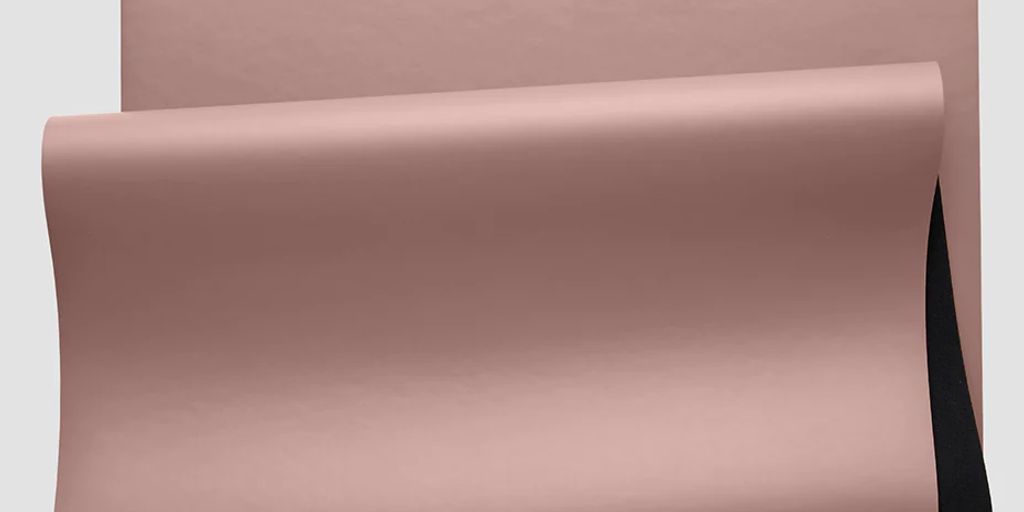Finding the Perfect Standard Yoga Mat Size for Your Practice
Choosing the right yoga mat is very important for a good practice. With so many sizes, thicknesses, and materials, it can be hard to pick the perfect one. This article will help you find the best standard yoga mat size for your needs.
Key Takeaways
- Standard yoga mats come in different lengths, widths, and thicknesses to fit different needs.
- Your height plays a big role in picking the right mat size for you.
- Thicker mats offer more comfort but can be harder to balance on.
- Different materials have different benefits, like better grip or being eco-friendly.
- Specialty mats are available for different types of yoga, like hot yoga or travel yoga.
Understanding Standard Yoga Mat Dimensions
Length and Width Considerations
When choosing a yoga mat, the length and width are crucial. Standard yoga mats are typically 68 inches long and 24 inches wide. However, if you're taller, you might need a longer mat to ensure comfort during stretches. Wider mats can also provide extra space for more dynamic movements.
Thickness and Its Impact
The thickness of a yoga mat can greatly affect your practice. Thicker mats, usually around 6mm, offer more cushioning, which is great for joint support. On the other hand, thinner mats, about 3mm, provide better stability and connection to the floor. Finding the right balance between comfort and stability is key.
Material and Durability
Yoga mats come in various materials, each with its own benefits. PVC mats are durable and provide good grip, but they are not eco-friendly. Natural rubber mats are a more sustainable option, though they may wear out faster. Consider how often you practice and your environmental impact when choosing a material.
How to Choose the Right Yoga Mat for Your Height
Measuring Your Height for Mat Selection
To find the perfect yoga mat, start by measuring your height. Stand straight against a wall and use a tape measure to get your exact height. This will help you pick a mat that fits you well.
Recommended Mat Sizes for Different Heights
Choosing the right mat size is important for comfort and stability. Here's a simple guide:
| Height Range | Recommended Mat Length |
|---|---|
| Under 5'4" | 68 inches |
| 5'4" to 6'0" | 72 inches |
| Over 6'0" | 84 inches |
Discover the importance of choosing the right yoga mat size for comfort, stability, and safety.
Customizing Your Mat for Comfort
If standard sizes don't work for you, consider customizing your mat. You can add extra padding or choose a longer mat for more space. This can make your practice more enjoyable and safe.
A well-fitted mat can enhance your yoga experience by providing the right support and space for your movements.
The Role of Yoga Mat Thickness in Your Practice
Benefits of Thicker Mats
Thicker yoga mats offer extra cushioning, which can be especially helpful for those with sensitive joints. They provide more support during poses that put pressure on your knees or wrists. This added comfort can make your practice more enjoyable and less painful.
Drawbacks of Thin Mats
While thin mats are lighter and easier to carry, they offer less cushioning. This can make certain poses uncomfortable, especially on hard floors. If you have joint issues, a thin mat might not be the best choice for you.
Finding the Balance
Choosing the right mat thickness is about finding a balance between comfort and portability. A mat that's too thick can make it hard to feel the floor, which is important for balance poses. On the other hand, a mat that's too thin won't offer enough support. Consider your body size and the type of yoga you practice when making your choice.
When selecting a yoga mat, it's important to consider both your comfort and the type of yoga you practice. A thicker mat can offer more support, but it might not be as portable. Finding the right balance is key to a successful practice.
Materials Used in Standard Yoga Mats
Eco-Friendly Options
Many yoga mats today are made from eco-friendly materials. These include natural rubber, jute, and organic cotton. Choosing an eco-friendly mat helps reduce your carbon footprint and supports sustainable practices. Natural rubber mats are popular because they offer good grip and cushioning.
Durability and Maintenance
The durability of a yoga mat depends on the material used. PVC mats are known for their long-lasting nature but are not eco-friendly. On the other hand, mats made from TPE (Thermoplastic Elastomer) are both durable and more environmentally friendly. Regular cleaning and proper storage can extend the life of your mat.
Texture and Grip
The texture of a yoga mat affects its grip. Mats with a textured surface provide better traction, which is important for maintaining stability during practice. Smooth mats might feel more comfortable but can be slippery, especially when wet. Finding a mat with the right balance of texture and comfort is key to a good practice.
A good yoga mat can make a big difference in your practice. It provides the comfort and stability you need to focus on your poses and breathing.
Specialty Yoga Mats for Different Practices
Hot Yoga Mats
Hot yoga mats are designed to handle the intense heat and sweat of hot yoga sessions. These mats often have a textured surface to provide extra grip, even when wet. They are usually made from materials that can absorb moisture and prevent slipping, ensuring a safe practice.
Travel Yoga Mats
Travel yoga mats are lightweight and easy to fold, making them perfect for yogis on the go. They are thinner than regular mats, which makes them easy to pack in a suitcase or backpack. Despite their thinness, they still provide enough cushioning for a comfortable practice.
Extra Long and Wide Mats
For those who need more space during their practice, extra long and wide mats are the perfect solution. These mats offer additional length and width, allowing for a more expansive practice area. They are ideal for taller individuals or those who prefer more room to move around.
Finding the right specialty yoga mat can greatly enhance your yoga experience. Whether you need a mat for hot yoga, travel, or extra space, there's a perfect option out there for you.
Caring for Your Yoga Mat
Cleaning and Maintenance Tips
To keep your yoga mat in top shape, regular cleaning is essential. Wipe down your mat after each session with a damp cloth and mild soap. For a deeper clean, soak it in a bathtub with water and a bit of vinegar. Always let it air dry completely before rolling it up.
Storing Your Mat Properly
Proper storage can extend the life of your mat. Roll it up loosely and store it in a cool, dry place. Avoid leaving it in direct sunlight or in a hot car, as this can cause the material to break down faster.
When to Replace Your Mat
Even with the best care, yoga mats don't last forever. If you notice wear and tear, like thinning or flaking, it might be time for a new one. A good rule of thumb is to replace your mat every 6 to 12 months, depending on how often you practice.
Taking good care of your yoga mat not only helps it last longer but also ensures a cleaner, more enjoyable practice.
Budgeting for Your Yoga Mat
Price Ranges for Standard Mats
When looking for a yoga mat, you'll find that prices can vary a lot. A quality yoga mat will typically cost between $20 and $280. While cheaper options might seem appealing, especially if you're just starting out, they might not last as long or provide the comfort you need.
Cost vs. Quality
It's important to balance cost and quality when choosing a yoga mat. Spending a bit more can often mean getting a mat that lasts longer and feels better during your practice. Think about how often you'll use the mat and what features are most important to you.
Where to Buy
You can buy yoga mats from many places, including online stores, sports shops, and even some supermarkets. Each place has its own range of prices and options, so it's worth shopping around to find the best deal. Look for sales or discounts to save money on a good mat.
Remember, investing in a good yoga mat can make a big difference in your practice. Choose wisely and enjoy your yoga journey!
When planning your budget for a new yoga mat, it's important to find one that fits both your needs and your wallet. At Yune Yoga, we offer a variety of mats that cater to different preferences and budgets. Whether you're looking for a natural rubber mat or a foldable travel mat, we've got you covered. Visit our website to explore our full range and find the perfect mat for your practice.
Conclusion
Choosing the right yoga mat size is key to having a good practice. It helps you stay balanced and comfortable. Always think about your height, the space you have, and what kind of yoga you do. Trying out different mats can also help you find the best one. Remember, the perfect mat makes your yoga time better and more fun. So, take your time and pick the one that feels just right for you.
Frequently Asked Questions
What size should a standard yoga mat be?
A standard yoga mat is usually about 68 inches long and 24 inches wide.
How thick should my yoga mat be?
Most yoga mats are between 1/8 inch and 1/4 inch thick. Thicker mats offer more cushion, while thinner mats provide better balance.
Do I need a special mat for hot yoga?
Yes, hot yoga mats are designed to handle sweat better and provide more grip when wet.
How do I clean my yoga mat?
You can clean your mat with a mix of water and mild soap. Wipe it down and let it air dry.
When should I replace my yoga mat?
Replace your mat if it starts to wear out, becomes slippery, or if it has an odor that won't go away.
Are eco-friendly yoga mats worth it?
Eco-friendly mats are made from natural materials and are better for the environment. They can be a bit more expensive but are worth it if you want to go green.


